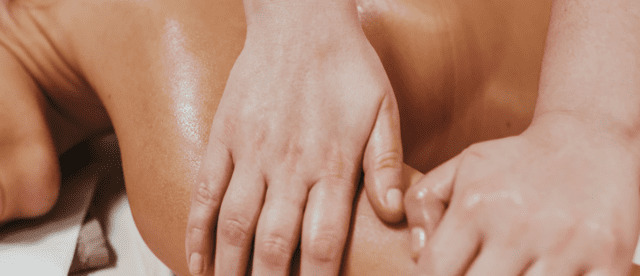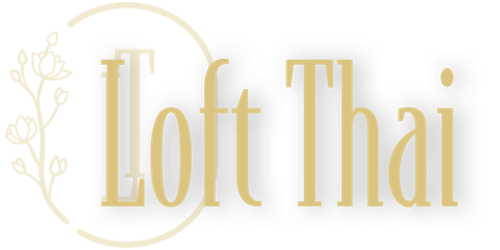
People have used massage therapy to relax, relieve stress, and ease physical pain for thousands of years. Many approaches and styles have developed over time to accommodate varied demands and preferences.
Two popular massage techniques are deep tissue oil massage and aromatherapy oil massage. Despite the fact that both forms of massage may use oil as a lubricant, the methods and pressure employed in each vary substantially. The differences in pressure and techniques between an aromatherapy oil massage and a deep tissue oil massage will be discussed in this article.
What is Aromatherapy Oil Massage?
A gentle style of massage that makes use of the therapeutic properties of essential oils is aromatherapy oil massage. Concentrated plant extracts known as essential oils have a number of therapeutic advantages. These oils can help with pain relief, stress reduction, relaxation, and mood enhancement when applied topically.
During an aromatherapy oil massage, the therapist will apply a blend of essential oils to the client's skin. The oil will then be applied to the skin by the therapist using gentle, sweeping motions and circular motions to help the oil penetrate and unleash its therapeutic properties. In order to relax the muscles and soothe the mind, aromatherapy oil massages typically use long, flowing strokes.
What is Deep Tissue Oil Massage?
Deep tissue oil massage, on the other hand, focuses on the deeper layers of the muscles and connective tissue. This style of massage uses more pressure and focused on specific problem areas than aromatherapy oil massage. Deep tissue oil massage is frequently used to release tension and lingering discomfort.
During a deep tissue oil massage, the therapist uses their hands, fingers, elbows, and forearms to apply deep pressure to the muscles. The therapist may also use stretches and movement exercises to help release muscle tension and improve range of motion. Although a deep tissue oil massage's pressure might sometimes be difficult, it is always adjusted to the client's comfort level.
Techniques Used in Aromatherapy Oil Massage
The techniques used in aromatherapy oil massage are intended to encourage calmness and wellness. The therapist will make lengthy, flowing strokes and circular motions to the skin to aid in the oil's penetration and release of its therapeutic properties. Light to medium pressure that is meant to be relaxing rather than intense is frequently used in aromatherapy oil massages.
The therapist may also use a variety of techniques to help the client unwind. A few examples include soft rocking, stretching, and tapping gestures. The therapist might also utilize breathing techniques to help the client relax and release stress.
Techniques Used in Deep Tissue Oil Massage
Treatments using deep tissue oil massage aim to release tension from the connective tissue and muscles. The therapist will apply deep pressure in order to target particular problem areas and try to release muscle tension and knots. Pressure during a deep tissue oil massage can vary from medium to extremely firm, and it occasionally feels uncomfortable.
A variety of techniques may be used by the therapist to reduce muscle tension. Examples include kneading, stripping, and long circular motions. The therapist may also use stretches and movement exercises to help release muscle tension and improve range of motion.
Pressure Used in Aromatherapy Oil Massage
Light to medium pressure is frequently used in aromatherapy oil massages. This is because the goal of this kind of massage is to promote relaxation and a feeling of wellbeing. The therapist will apply the oil using gentle, circular motions to let it penetrate the skin and unleash its therapeutic properties. The pressure used during an aromatherapy oil massage should be soothing rather than vigorous.
Pressure Used in Deep Tissue Oil Massage
Deep tissue oil massage pressure can range from mild to very firm, depending on the client's comfort level and the therapist's assessment of the problem regions. The therapist will apply deep pressure in order to target particular problem areas and try to release muscle tension and knots. While the deep tissue oil massage therapist will always adjust the pressure to the client's comfort level and use different techniques as needed, there are times when the pressure used can be painful.
Which Massage Style is Right for You?
Your individual needs and preferences will determine which massage technique is ideal for you. If you're looking for a light massage style that promotes relaxation and a sense of well-being, aromatherapy oil massage may be your best option. This massage technique is a great option for you if you are sensitive to pressure or have never had a massage.
On the other hand, deep tissue oil massage may be a better choice if you experience ongoing discomfort or muscular tightness. This kind of massage, which is meant to loosen up tight muscles, has a lot of potential for reducing pain and improving range of motion. To ensure that the pressure is adjusted to your comfort level, it's important to let the therapist know if you're sensitive to pressure or have never had a massage before.
Conclusion
In conclusion, the techniques and intensity of two well-liked massage modalities—deep tissue oil massage and aromatherapy oil massage—vary. Aromatherapy oil massage is a gentle form of massage that, by utilizing the therapeutic properties of essential oils, encourages relaxation and a sense of well-being. Deep tissue oil massage, on the other hand, is a style of massage that aims to relieve tension in the muscles and connective tissue and is especially effective at reducing pain and improving range of motion.
Your individual demands and preferences will ultimately determine the optimal massage style for you. If you are unsure of which massage technique is best for you, it is always a good idea to consult a licensed massage therapist. Depending on your specific needs and goals, they can help you make the right choice. An aromatherapy oil massage or a deep tissue oil massage both have several benefits, including improved relaxation, less stress, and improved physical health and well-being.

